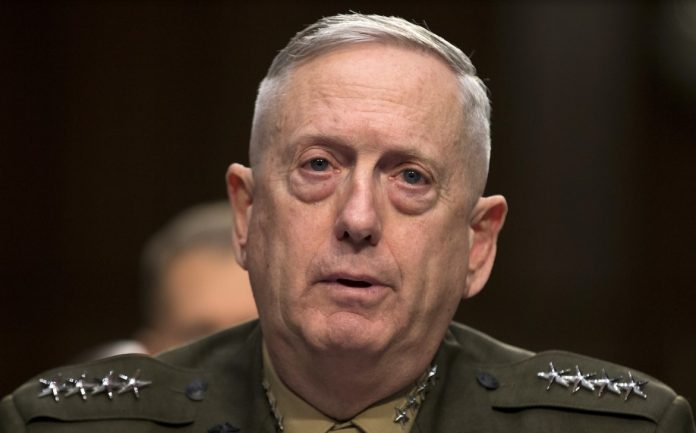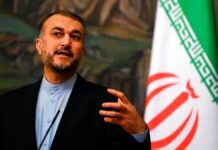
As the fight against the Islamic State moves beyond its de facto capital in Raqqa, the Pentagon is readying itself for an increasingly complex battlefield in northern Syria, where U.S.-backed forces, pro-Syrian government troops and Russian jets will likely all be fighting near one another.
Speaking to reporters on his way to Germany Monday to meet with European allies, Secretary of Defense Jim Mattis spoke broadly about the U.S. military’s future operations against the Islamic State in the Euphrates River Valley, adding that it will take “more precision” to stave off any incidents between the disparate forces operating there.
“You have to play this thing very carefully,” Mattis said. “The closer we get, the more complex it gets.”
The strip of the Euphrates River Valley that runs through northeastern Syria has turned into one of the last Islamic State redoubts following the group’s near-defeat in the Iraqi city of Mosul and the U.S.-led operation to encircle its stronghold in Raqqa. While the Pentagon has eyed the region as the next place to attack the militants, Syrian government forces and Iranian-backed militias have also made a concerted effort to move into the area.
To avoid the seemingly inevitable collision between U.S.-backed fighters and pro-Syrian government forces, including their respective air support, Mattis indicated that the Euphrates River Valley, would be carved up into “deconfliction” areas. The zones would be marked by easily identifiable parts of the river valley, such as towns and geographic features on the map, he said.
“As long as it’s worked out by the commanders and enough people know about it in sufficient time there are ways that have proven that we can do this,” Mattis said. The retired four-star Marine general suggested that with so many forces operating in the same area that deconfliction efforts would have to be worked out differently than they have in the past, though how exactly is unclear.
Currently, there are a number of communication lines between Russian and U.S. forces, including one that runs into the U.S.-led coalition’s main operations center in Qatar and another that connects the commander of U.S. forces in Iraq and Syria, Lt. Gen. Stephen Townsend, to his Russian counterpart in Syria.
“The deconfliction lines, through all of these contentious months that we’ve been through, have never gone down,” Mattis added.
The communication channels between the United States and Russia, Mattis said, have helped U.S. forces stay “focused” on fighting the Islamic State and have kept the United States from a widening role in the six-year-old conflict that has claimed hundreds of thousands of lives and displaced millions.
“We just refuse to get drawn into the Syrian Civil War,” Mattis said. “We try to end that through diplomatic means.”
(c) 2017, The Washington Post · Thomas Gibbons-Neff
{Matzav}











